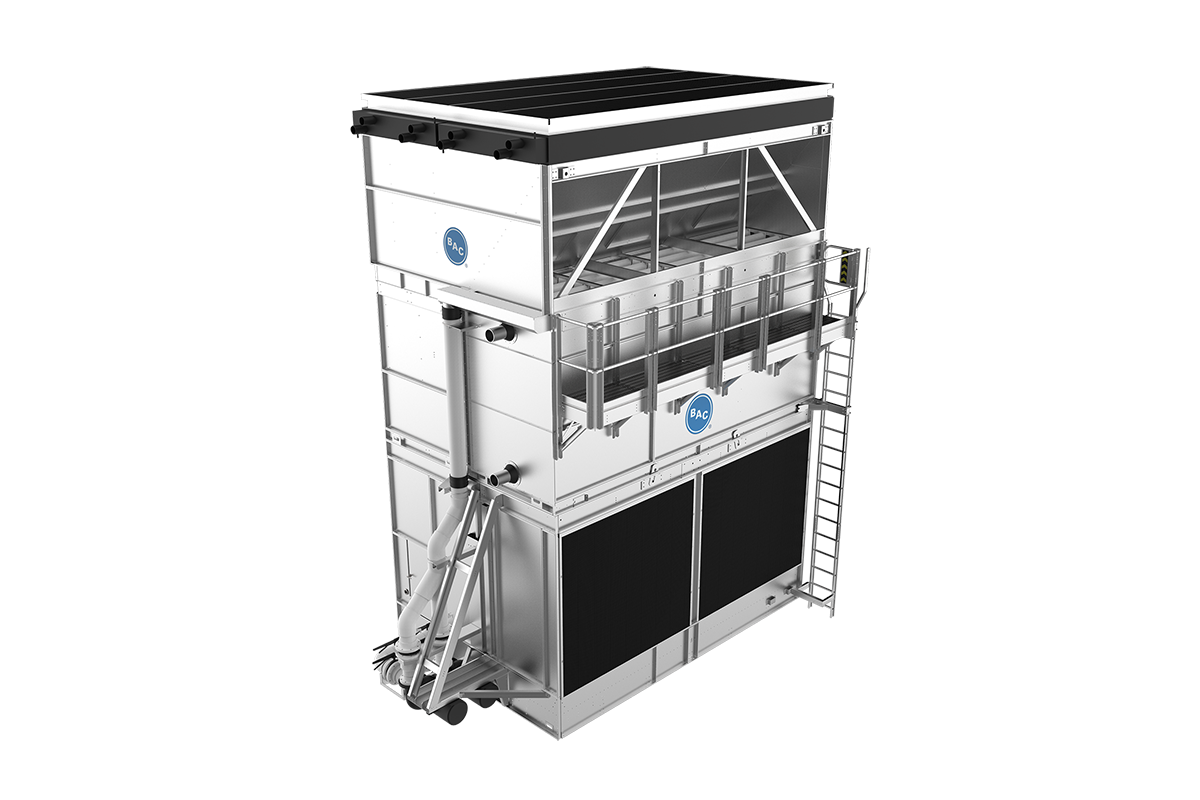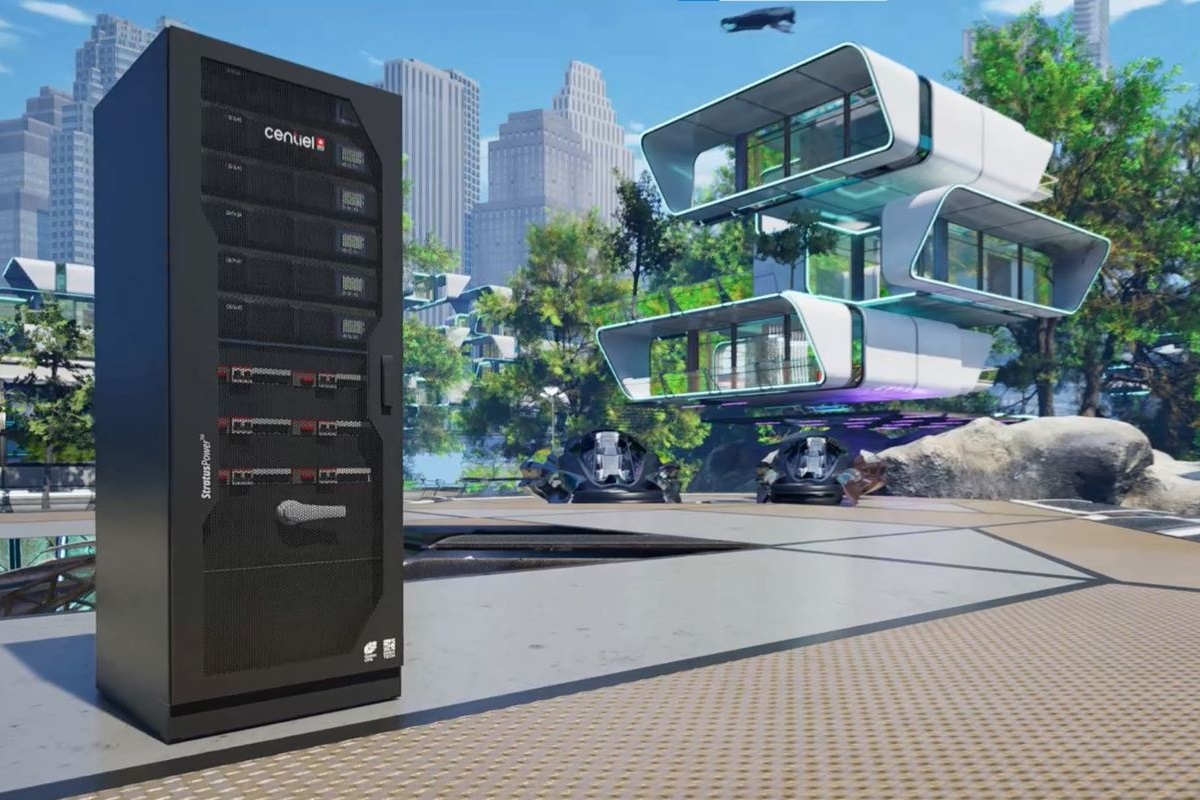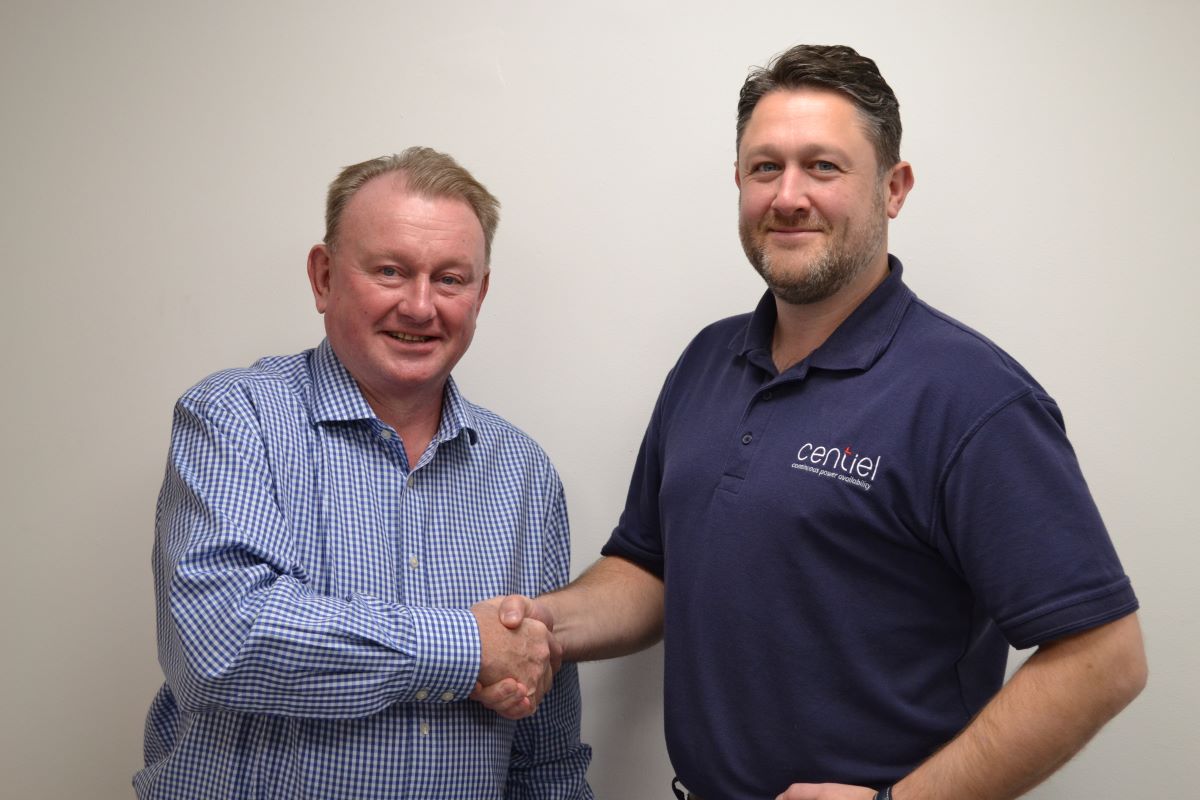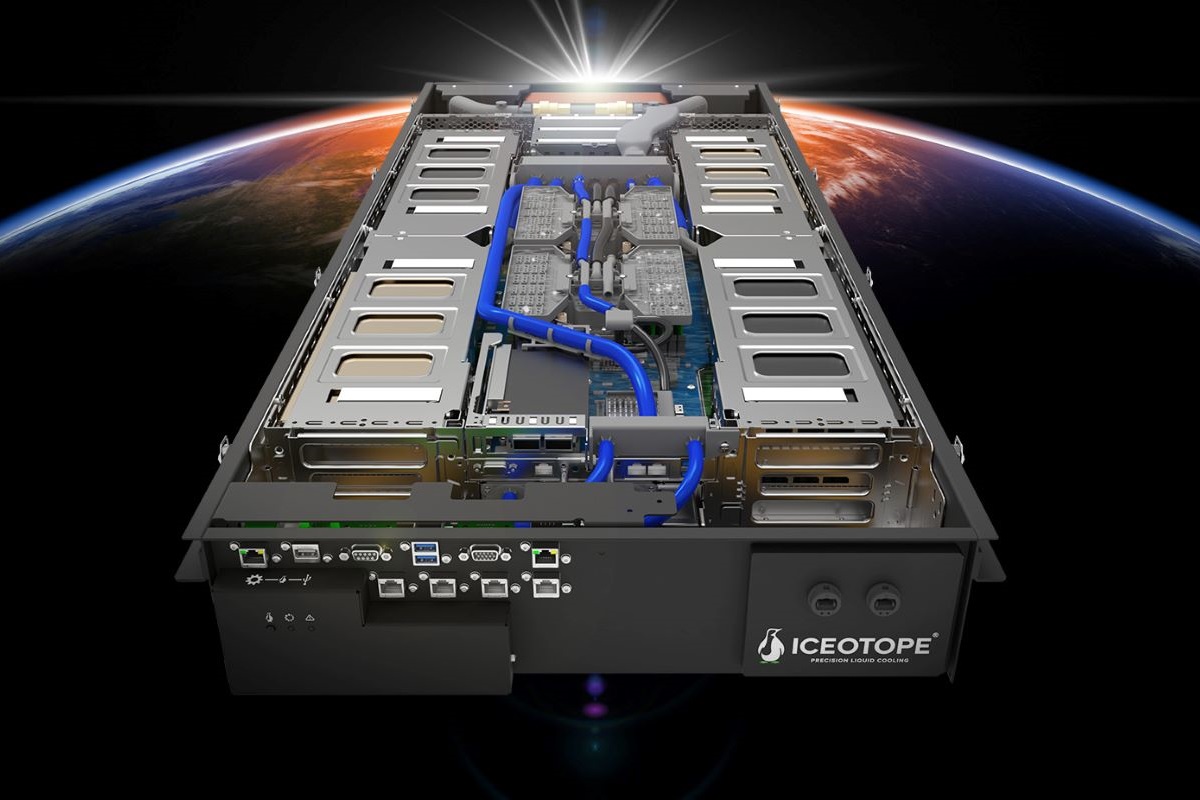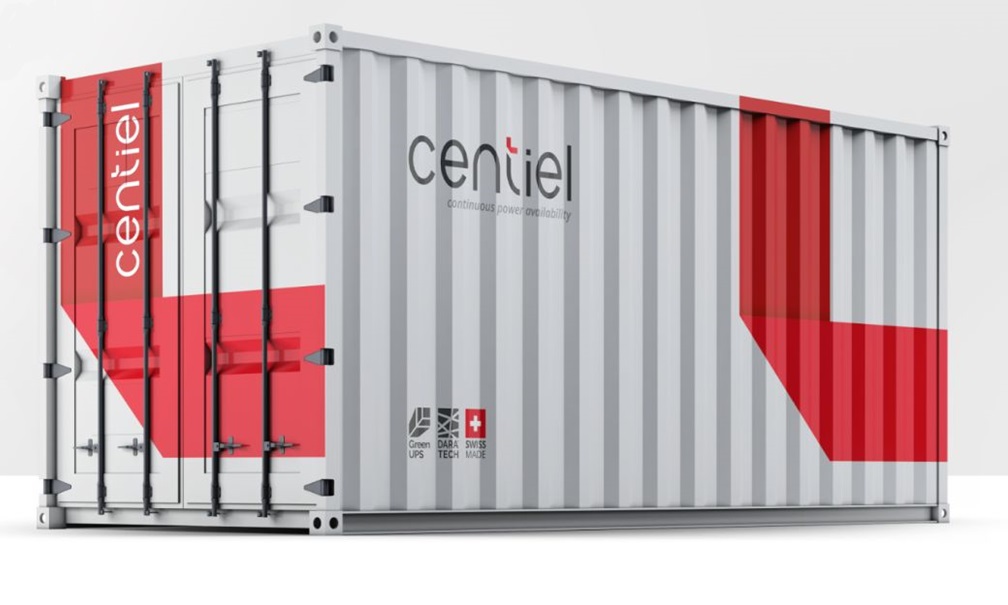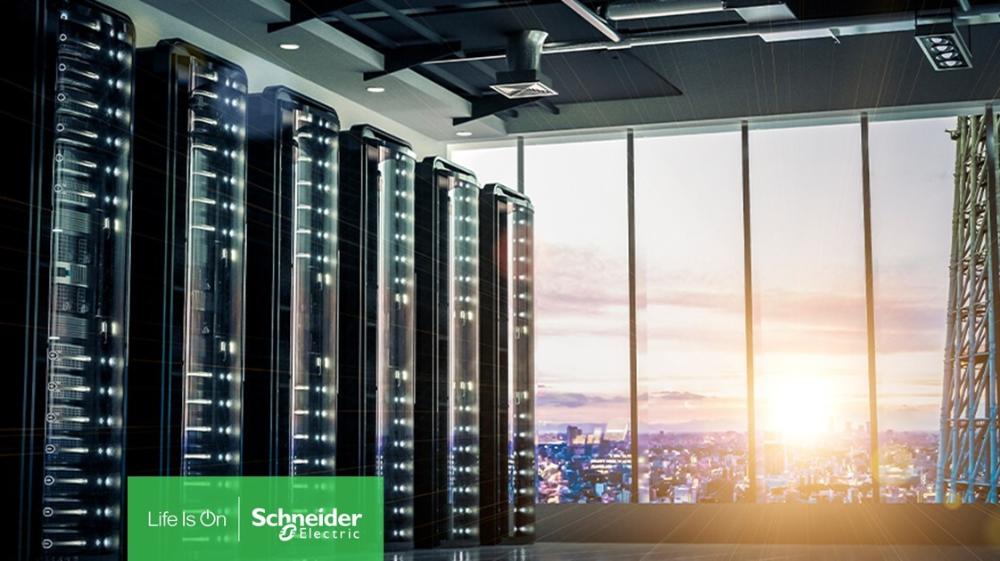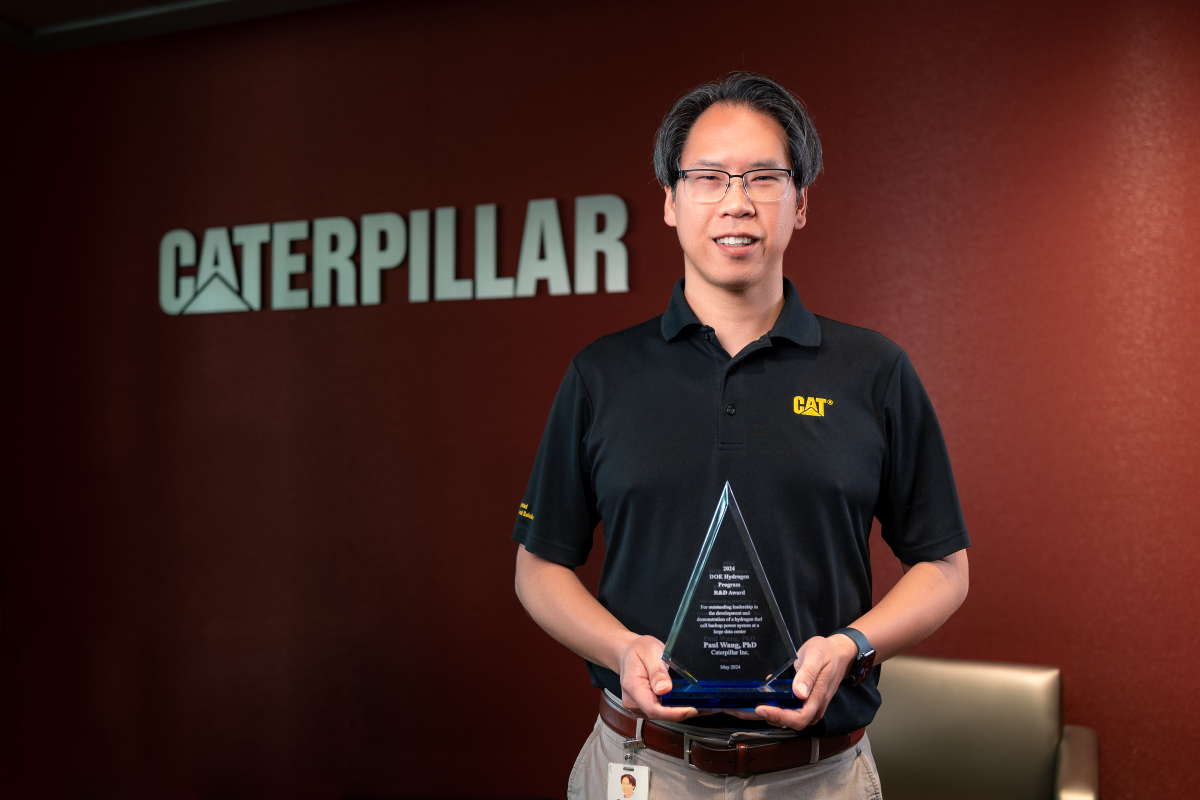Innovations in Data Center Power and Cooling Solutions
Data Centres
Innovations in Data Center Power and Cooling Solutions
News
Riello UPS set for Data Centre World 2025
Critical power protection specialist, Riello UPS, is set to showcase its comprehensive range of data centre products and innovations at the industry’s largest trade event of the year.
The uninterruptible power supply manufacturer is once again exhibiting at Data Centre World, which returns to ExCeL London on 12-13 March.
Members of the Riello UPS team will be on hand at stand DC340 throughout the two-day event to showcase demo versions of several of its data centre UPS ranges, including the modular Multi Power and Multi Power2, the evolution of its modular offering capable of ultra-high efficiency of up to 98.1%.
They will also be on hand to outline the business’s range of UPS maintenance plans, comprehensive data centre UPS design and consultancy services, and a growing library of certified CPD content for data centre consultants and engineers.
Data Centre World is recognised as the largest global gathering of data centre professionals, and this year’s event is once again staged as part of the wider Tech Show London, giving attendees the opportunity to explore four other co-hosted events (Cloud Expo Europe, DevOps Live, Cloud & Cyber Security Expo, and Big Data & AI World).
DCW 2025 will host more than 300 exhibitors from across the industry, along with a packed conference programme featuring over 200 hours of seminars, discussions, and speakers.
Key themes for this year’s show include:
• Redefining Data Centres: Sustainability, Resiliency, and Tech Innovation• Navigating the Regulation Landscape• Protecting the Data Centre: Security in the Modern World• Modernising Data Centre Infrastructures: Edge, Colocation, Hyperscales• The Impact of AI on Data Centres• Cultivating a People-Focused Data Centre Workforce Culture• Financing Data Centres: The Investor’s Perspective.
Leo Craig, Managing Director of Riello UPS, comments, “Data Centre World is always our most anticipated show of the year and we can’t wait to showcase our proven range of data centre solutions again at the ExCeL.
“This year’s event is the first since our successful completion of the company merger, bringing together all the wholly owned UK subsidiaries of Riello UPS under one strong, unified brand. We’re looking forward to showing how integrating these strengths, expertise, and resources into a single entity will enable us to provide enhanced product and service offering, along with expanded customer support.”
For more from Riello UPS, click here.
Simon Rowley - 5 February 2025
Data Centre Infrastructure News & Trends
Innovations in Data Center Power and Cooling Solutions
News
Sustainable Infrastructure: Building Resilient, Low-Carbon Projects
Feature - Sustainable data centre cooling
In many data centres, water-cooled chillers are paired with an open or closed-circuit cooling tower for heat rejection. Other options include dry coolers, hybrid fluid coolers and adiabatic fluid coolers. It is beneficial to evaluate all heat rejection options to optimise energy and water consumption.
Baltimore Aircoil Company (BAC) was approached by a high-performance computing customer with 160MW operating power to provide a more sustainable cooling solution. They had previously used open cooling towers with water-cooled chillers, so BAC worked with the customer to understand its major challenges and needs.
The following were identified as critical priorities:
- Minimise water usage while balancing energy consumption to support customer sustainability efforts- Provide cooling for an increasing heat load in a smaller footprint- Meet system water temperature requirements without chillers at high loads and varying outside conditions
BAC analysed the IT capacity, space requirements, operating power, and location weather data, and then evaluated fully evaporative, hybrid, and adiabatic solutions. Based on the analysis, BAC recommended a chillerless system utilising the HXVTM hybrid cooler. The HXV’s packaged evaporative and dry cooling features offered the water saving and energy efficient solution the customer desired. The factory assembled unit also allowed for easier maintenance and serviceability for the operations team. They were able to easily access the cold-water basin, prime surface coil and drive system due to the crossflow design, large doors, and internal access platforms. Additionally, the customer could perform faster inspections of the spray distribution system while the unit was in operation.
The HXV Hybrid Cooler not only addressed all of the customer’s challenges and needs, but it also reduced annual energy costs and improved system efficiency. The HXV Hybrid Cooler helped achieve an estimated power usage effectiveness (PUE) of 1.136.
The HXV incorporates three modes of operation. It has the benefits of evaporative, adiabatic, and dry cooling in a water saving and energy efficient solution. It maintains peak system performance for a variety of applications where water is scarce, water costs are high, uptime is critical, or plume is a concern. Furthermore, it is an ideal solution where space is limited. The HXV hybrid cooler offers the following benefits:
- Up to 70% water savings compared to an open cooling tower due to a high dry switch point and more dry operating hours- Year-round 'sensible cooling' with the dry coil to maximise water savings- On average, 25% water savings even on a design day through sensible cooling- Up to 60% lower energy costs compared to air cooled systems due to evaporative cooling and BAC’s innovative combined flow design- Increased operational and layout flexibility with balanced water and energy savings- Highest reliability, and water saver mode eliminates plume abatement- Up to 25% less maintenance than traditional fluid coolers due to dry operation and crossflow design- Up to 70% chemical savings due to dry operation
In this installation, the HXV Hybrid Cooler met the customer’s need for a reasonable first cost while significantly reducing both water consumption and operating costs. The HXV heat rejection benefits compared to open cooling towers with water-cooled chillers are:
- 71% reduction in annual WUE- 86% reduction in installed peak power- 52% reduction in annual operating cost (energy and water)
For more from BAC, click here.
Simon Rowley - 2 January 2025
Innovations in Data Center Power and Cooling Solutions
News
Feature - Why clever engineering counts
By Louis McGarry, Sales & Marketing Director at Centiel.
Prices continue to rise, and all facilities managers need to look at controlling budget expenditure carefully. However, it’s better to make intelligent savings rather than just slashing costs. Cost based decisions typically compromise on quality and poor quality, inferior systems inevitably requiring frequent repair or replacement. And, let’s face it, an uninterruptable power supply (UPS) that protects the critical load to clients’ data is the last place where corners should be cut. The consequences of failure can be devastating for business and will permanently damage the business’s reputation.
So how can budgets be managed better? Firstly, Centiel advises all its customers to increase their knowledge about the available options and works as trusted advisors to help organisations manage total cost of ownership (TCO) with that precise objective in mind.
Budgets are never limitless, so Centiel supplies calculations to compare available options. For example, is it cheaper to repair or replace a legacy UPS system? Working through the data and providing estimates of savings on efficiency and comparative running costs helps clients make informed decisions about when a new UPS will essentially ‘pay for itself’.
Centiel also looks at how existing infrastructure can be re-used. Modular UPS have significant advantages as modules with the same rating can be easily redeployed. Centiel’s safe-hot-swap functionality means it takes only a few minutes for a trained in-house engineer to swap an underused module to an area of higher load demand. With training, monitoring and clever re-deployment, significant savings on capital expenditure and running costs (OPEX) can be achieved by ensuring the UPS always works at the sweet spot of its efficiency curve.
Centiel looks at site layout too. VRLA batteries run optimally at around 200°C compared to UPS which are comfortable operating up to 400°C. So, housing VRLAs separately in a naturally cooler room may reduce cooling costs. If this is unachievable, LiFePO4 batteries, which run optimally at much higher temperatures, are an option.
Data centres with a resilience level of N+N can also manage their UPS systems by utilising both economy (eco) mode and true online double conversion (inverter) mode. Centiel’s latest UPS technology offers 97.6% efficiency in normal operation whilst its eco mode is 99%, so switching to eco mode will save over 2% in energy losses. With large UPS running 24/7 for 10 years, this adds up.
Centiel has spent years developing solutions using the highest quality components so the system itself reduces a client’s expenditure over the long term. This is surely better than a client installing cheap, poor-quality equipment which is prone to failure. Centiel’s clients are safe in the knowledge their critical load is protected with Centiel’s multi-award winning UPS which offer class leading 99.9999999% availability and one of the highest efficiencies on the market. This, combined with Centiel’s support to train and help clients reduce the TCO through tried and tested techniques to maximise efficiencies, helps clients control costs through planning, design and clever engineering.
For more from Centiel, click here.
Simon Rowley - 2 January 2025
Innovations in Data Center Power and Cooling Solutions
News
Centiel appoints new UK Key Account Manager
Uninterruptible power supply (UPS) manufacturer, Centiel, has appointed industry expert, Karl Bateson (pictured above, left), as its UK Key Account Manager. Karl, who has 30 years’ experience, will now support Centiel’s customers across all areas in this newly created role.
Louis McGarry (pictured above, right), Sales and Marketing Director, Centiel, explains, “Centiel’s reputation as innovators in UPS technology, backed up by our experienced team of trusted advisors, means we continue to expand rapidly. StratusPower, our multi-award-winning UPS system, has also contributed to our continued growth, and so we are delighted to welcome Karl to our sales team.
“Karl’s extensive experience and technical UPS knowledge means he’s the perfect fit to provide continuity for our UK key account customers, supporting them with new project enquiries, upgrading their legacy equipment to the latest technology, and managing their service needs. At Centiel, we create and build long-term relationships with our clients, and Karl’s background and expertise will ensure they are fully supported throughout their Centiel journey.”
Karl Bateson, Centiel UK Key Account Manager, comments, “My new role is flexible and means I have the full scope to help customers solve whatever challenges they face. Centiel’s technology is world class and I am excited to join such an innovative company at the forefront of modular UPS development, and to be able to offer the highest quality UPS solutions to protect critical power needs.”
Karl Bateson joins Centiel from Kohler, where he spent 10 years as a sales manager. Karl has also previously worked with other UPS brands including Euro-Diesel, and he has extensive experience working in the USA. He has a degree in Electrical and Electronics Engineering from Salford University.
Centiel is a Swiss-based technology company designing, manufacturing, and delivering power protection solutions for critical facilities. In 2023, Centiel was confirmed as the recipient of the 2023 Frost & Sullivan Technology Innovation Leadership Award in the global UPS industry. Centiel now protects critical loads for data centres and comms rooms in over 100 countries across five continents.
For more from Centiel, click here.
Simon Rowley - 29 November 2024
Data Centre Infrastructure News & Trends
Innovations in Data Center Power and Cooling Solutions
Liquid Cooling Technologies Driving Data Centre Efficiency
News
Iceotope launches new precision liquid-cooled server
Iceotope, a Precision Liquid Cooling (PLC) specialist, has announced the launch of KUL AI, a new solution to deliver the promise of AI everywhere and offering significant operational advantages where enhanced thermal management and maximum server performance are critical.
KUL AI features an 8-GPU Gigabyte G293 data centre server-based solution integrated with Iceotope’s Precision Liquid Cooling and powered by Intel Xeon Scalable processors – the most powerful server integrated by Iceotope to date. Designed to support dense GPU compute, the 8-GPU G293 carries NVIDIA Certified-Solutions accreditation and is optimised by design for liquid cooling with dielectric fluids. KUL AI ensures uninterrupted, reliable compute performance by maintaining optimal temperatures, protecting critical IT components, and minimising failure rates, even during sustained GPU operations.
The surge in power consumption and sheer volume of data produced by new technologies including Artificial Intelligence (AI), high-performance computing (HPC), and machine learning poses significant challenges for data centres. To achieve maximum server performance without throttling, Iceotope's KUL AI uses an advanced precision cooling solution for faster processing, more accurate results, and sustained GPU execution, even for demanding workloads. KUL AI is highly scalable and proven to achieve up to four times compaction, handling growing data and model complexity without sacrificing performance.
Its innovative specifications make KUL AI ideal for a range of industries where AI is becoming increasingly essential: from AI research and development centres, HPC labs and cloud service provider (CSPs), to media production and visual effects (VFX) studios, and financial services and quantitative trading firms.
Fitting seamlessly into the KUL family of Iceotope technologies, KUL AI uses Iceotope’s Precision Liquid Cooling technology which offers several advantages – from providing uniform cooling across all heat-generating server components to reducing hotspots and improving overall efficiency. Additionally, PLC eliminates the need for supplementary air cooling, leading to simpler deployments and lower overall energy consumption.
Improving cost-effectiveness and operation efficiency are constant targets for Iceotope. In fact, KUL AI’s advanced thermal management maximises server utilisation, boosting compute density, cutting energy costs, and extending hardware lifespan for a lower total cost of ownership (TCO). Furthermore, KUL AI cuts energy use by up to 40% and water consumption by 96%, and minimises operational costs, while maintaining high thermal efficiency and meeting sustainability targets.
Built with scalability and adaptability in mind, KUL AI is deployable in both data centres and across all edge IT installations. Precision Liquid Cooling removes noisy server fans from the cooling process, resulting in near-silent operations and making KUL AI ideal for busy non-IT and populous workspaces which nonetheless demand sustained GPU performance.
Ideal for latency-sensitive edge deployments and environments with extreme conditions, KUL AI is sealed and protected at the server level, not only ensuring uniform cooling of all components on the GPU motherboard, but also rendering it impervious to airborne contaminants and humidity for greater reliability. Crucially, PLC minimises the risk of leaks and system damage, making it a safe choice for any critical environments.
Nathan Blom, Co-CEO of Iceotope, says, “The unprecedented volume of data being generated by new technologies demands a state-of-the-art solution which not only guarantees server performance, but delivers on all vectors of efficiency and sustainability. KUL AI is a pioneering product delivering more computational power and rack space. It offers a scalable system for data centres and is adaptable in non-IT environments, enabling AI everywhere.”
The launch will be showcased for the first time at Super Computing 2024, taking place in Atlanta from 17-22 November 2024. The Iceotope team will be welcoming interested parties at nVent Booth 1738. To schedule an introductory meeting, contact sales@iceotope.com.
For more from Iceotope, click here.
Simon Rowley - 12 November 2024
Data Centre Infrastructure News & Trends
Data Centres
Innovations in Data Center Power and Cooling Solutions
"One size does not fit all"
By Louis McGarry, Sales & Marketing Director, Centiel
One of the most common questions I get asked is ‘What size UPS do you sell?’ The answer is that Centiel's multi-award winning, true modular UPS StratusPower can be made available in any size that the data centre needs. For facilities where the future load is uncertain, Centiel's team of trusted advisors work hand-in-hand with customers to design an appropriate power protection solution which is flexible to be able to scale up or down, depending on requirements.
StratusPower has been developed by Centiel's experts to be the most customisable UPS product on the market. The company can be led by access limitation or limited space to achieve the most power in the tightest spaces. This means Centiel can customise the UPS to fit a range physical axis or even integrate into a containerised pod.
StratusPower can also be configured to accommodate the electrical infrastructure whether that’s top and bottom cable entry or busbar connections. As a result, StratusPower can be installed into any type of data centre from edge facilities to multi megawatt operations.
The only elements which remain fixed are the technological benefits of StratusPower which are always present regardless of the size of the installation and include: high efficiency, market leading availability, scalability, reliability and sustainability.
StratusPower is also durable due to its topology and innovative hardware and firmware design, meaning components are not stressed and last longer. Instead of replacing consumables such as filter capacitors and cooling fans every four to six years, replacements are needed every 15 years, or just once during their entire 30-year design life. This is important as a data centre has a design life of typically 25 to 30 years.
With proven '9 nines' availability, StratusPower effectively eliminates system downtime. Class leading 97.6% on-line efficiency minimises running costs, and true 'hot swap' modules eliminate human error and allowing modules to be tested fully while connected to the grid in the hot frame and disconnected physically from the load, increasing safety during upgrades.
The key point is StratusPower is ready designed as the most advanced UPS available and yet the build and ultimate solution is totally flexible and dependent on actual needs. The infrastructure and racks accept modules of the same rating which means modules from a lightly loaded area can also be re-deployed to parts of the data centre needing more power protection. These scalable and flexible UPS cabinets therefore, enable future load changes to be easily accommodated by adding or removing UPS modules as required. A data centre will never outgrow a well specified StratusPower UPS, and it can be constantly rightsized to ensure it always operates at the optimal point in its efficiency curve.
Further, StratusPower is also adaptable and has been designed to integrate with different energy management protocols, and is future ready to accept alternative energy sources.
With its innovative topology, advanced energy management features, and unmatched scalability, StratusPower is the ultimate UPS system for data centre operators looking to optimise their power infrastructure. StratusPower is offered in a power range from 50 to 1,500 kW in one cabinet, and can be paralleled for 3,750 kW critical power protection.
For more from Centiel, click here.
Simon Rowley - 6 November 2024
Cooling
Data Centres
Innovations in Data Center Power and Cooling Solutions
Liquid Cooling Technologies Driving Data Centre Efficiency
News
Schneider Electric acquires liquid cooling company
Schneider Electric has announced that it has signed an agreement to acquire a controlling interest in Motivair Corporation, a company that specialises in liquid cooling and advanced thermal management solutions for high performance computing systems.
The advent of Generative-AI and the introduction of Large Language Models (LLMs) have been additional catalysts driving enhanced power needs to support increased digitisation across end-markets. This shift to accelerated computing is resulting in new data centre architectures requiring more efficient cooling solutions, particularly liquid cooling, as traditional air cooling alone cannot mitigate the higher heat generated as a result.
As the compute within data centres becomes higher-density, the need for effective cooling will grow, with multiple market and analyst forecasts predicting growth in liquid cooling solutions in excess of +30% CAGR in the coming years. This transaction strengthens Schneider Electric’s portfolio of direct-to-chip liquid cooling and high-capacity thermal solutions, enhancing existing offerings and furthering innovation in cooling technology.
Headquartered in Buffalo, New York, Motivair was founded in 1988 and currently has over 150 employees. Leveraging its strong engineering competency and deep domain expertise, Motivair has a range of offers including Coolant Distribution Units (CDUs), Rear Door Heat Exchangers (RDHx), Cold Plates and Heat Dissipation Units (HDUs), alongside Chillers for thermal management. Motivair provides its customers with a portfolio to meet the thermal challenges of modern computing technology.
While liquid cooling is not a new technology, specific application to the data centre and AI environment represents a nascent market set for strong growth in the coming years. Motivair has years of experience in cooling the world’s fastest supercomputers with liquid cooling solutions. In recent quarters, the company has been tracking a strong double-digit growth trajectory, which is expected to continue as it pivots to provide end-to-end liquid cooling solutions to several of the largest data centre and AI customers.
Peter Herweck, CEO of Schneider Electric, comments, “The acquisition of Motivair represents an important step, furthering our world leading position across the data centre value chain. The unique liquid cooling portfolio of Motivair complements our value proposition in data centre cooling and further strengthens our prominent position in data centre build out, from grid to chip and from chip to chiller.”
Rich Whitmore, President & CEO of Motivair Corporation - who will continue to run the Motivair business out of Buffalo after the closing of the transaction - adds, “Schneider Electric shares our core values and commitment to innovation, sustainability and excellence. Joining forces with Schneider will enable us to further scale our operations and invest in new technologies that will drive our mission forward and solidify our position as an industry leader. We are thrilled to embark on this exciting journey together."
Under the terms of the transaction, Schneider Electric will acquire an initial 75% controlling interest in the equity of Motivair for an all-cash consideration of $850 million (£652m), which includes the value of a tax step-up, and values Motivair at a mid-single digit multiple of projected FY2025 revenue.
The transaction is subject to customary closing conditions, including the receipt of required regulatory approvals, and is expected to close in the coming quarters. On completion, Motivair would be reported within the Energy Management business of Schneider Electric. The Group expects to acquire the remaining 25% of non-controlling interests in 2028.
For more from Schneider Electric, click here.
Simon Rowley - 18 October 2024
Innovations in Data Center Power and Cooling Solutions
News
Sustainable Infrastructure: Building Resilient, Low-Carbon Projects
Schneider Electric announces circular economy UPS offer
Schneider Electric has announced the results of an industry-first, circular economy initiative for its range of APC Smart-UPS uninterruptible power supplies (UPS).
First trialled in France in 2024 via a pioneering reduce, reuse and recycle programme, delivered in partnership with distributor Ingram Micro, Schneider Electric sought to increase the sustainability and circularity of its industrialised single-phase UPS solutions, while meeting customers’ demands for sustainable, responsible systems.
The new solutions enable Schneider Electric’s French partners to address the competitive and fast-growing market for circular IT equipment - helping customers to reduce CO2 emissions associated with their critical systems, and with zero impact on the UPS’ operational performance, resiliency, or energy efficiency.
With several high-profile French customers now utilising Schneider Electric’s circular UPS, including CGR Cinemas – one of Frances’ most notable leaders in the film industry – circular economy projects will also be extended to support partners and customers in key countries across Europe, including the UK and Ireland, Italy, Spain, Belgium, Netherlands and Germany (DACH).
Further, with take-back services delivered with Schneider Electric's partner ecosystem in France, coupled with replacement, recycling and rigorous testing processes via Schneider Electric’s local repair centre, the new solutions form part of a complete circular economy offer to serve the French channel and end-user markets. They allow customers to utilise circular, responsible power protection products with the same level of quality and warranty as Schneider Electric standard UPS, while being less CO² emissive.
“When we first set out to establish our circular UPS offer, our ambition was to ensure that there was no compromise on the efficiency, resilience and the sustainability of our industrial processes, and to create sustainable solutions that deliver the same level of quality and reliability our customers expect,” says Geoffrey Richard, Schneider Electric’s Circular Economy Director, France. “Through these new UPS’, our partners can meet customer demands for sustainable solutions safe in the knowledge that they are making a significant contribution to environmental sustainability, and that their customers will benefit from the same warranty as standard Schneider Electric Smart-UPS models.”
“As one of the largest distributors in Europe, Ingram Micro is on a mission to help our partners and their customers run better, grow faster, and become more mindful of the impacts their actions have on people and our planet,” adds Sandrine Vigor, Sustainability Manager at Ingram Micro, France. “We’re delighted to have partnered with Schneider Electric to bring this industry-first initiative to life, and one which aligns so closely with the values of our IngramMicroESG programme perfectly - supporting our ambitions to help businesses become more sustainable, globally.”
Serving the market for second life IT
Research published by Canalys in 2024 found that 50% of partners expect to generate revenue from sustainability solutions this year, and that a further 92% of customers are seeking guidance from partners around sustainable product procurement processes, including circular IT systems.
Schneider Electric’s new circular UPS offer not only support partners’ ambitions to capture growth opportunities associated with sustainable products but enables them to act as trusted partner for take-back, recycle and replacement services, while meeting local environmental and regulatory requirements such as the European Energy Efficiency Directive (EED), Paris agreement, and the United Nations (UN) climate objectives.
According to the Circularity Gap report 2023, a transition to a global circular economy will allow us to fulfil people's needs with only 70% of the materials we now extract and use – moving human activity back within the safe limits of the planet. Schneider Electric’s own research showed that products from the circular economy can reduce CO2 emissions by an average of 35% compared to first-time manufacturing – a transformation which involves profound supply chain changes to recover products and equipment for reconditioning, repair or remove spare parts to repair others.
From an environmental standpoint, Schneider Electric’s new circular UPS offer requires key processes which include taking back the end-of-life UPS, detailed diagnosis and testing, dismantling and refurbishment of all single critical parts and end of use components such as batteries, switches and LEDs, reassembly, and rigorous testing – all prior to repackaging and resale, with the same alignment on applicable standards, quality and warranty as a brand-new UPS.
Further, as the UPS solutions require less primary extraction of raw materials, and a reduction of potentially harsh or hazardous substances, customers are also more resilient against fluctuations in the pricing and availability of raw materials, and importantly, can ensure that embodied CO² or Scope 3 emissions associated with the production process are far lower than that of a standard system.
Delivering circular solution for CGR Group
One high-profile adopter of Schneider Electric’s circular UPS solutions is The CGR Cinemas group, which operates 713 movie theatres across France. CGR is well-known as a major player in the French film industry, leading for several decades and is the second largest operator of cinemas in the region.
A key part of its strategy is to create places where emotions, exchanges and experiences are lived and reinvented without respite, and it has developed a park of 45 premium ICE rooms in its cinemas, including the deployment of 4K laser projectors within its theatres and new comfort rooms for an ever more qualitative experience.
Protecting its critical systems from power failures is vital to the customer experience, so it chose Schneider Electric’s new circular UPS offer not only for the quality of its innovative products, but because the company’s commitments to creating environmentally friendly technologies met CGR’s requirements for energy efficiency and sustainability. By using Schneider Electric’s circular Smart-UPS, CGR Cinemas will save 11T600 (11,600 tonnes) of CO² emissions, while safeguarding their critical equipment.
Michael Cron, Logistics and Purchasing Director, CGR Group, notes, "Schneider Electric’s choice was natural, as their commitment to environmentally friendly products is in perfect harmony with our values of sustainability. Their innovative and eco-friendly approach, while meeting our high-performance requirements, is fully in line with our ambitions for environmental responsibility and efficiency. This choice, both technical and economic, can only be realised and sustained through common interaction and collaboration."
For more from Schneider Electric, click here.
Simon Rowley - 17 October 2024
Data Centres
Innovations in Data Center Power and Cooling Solutions
News
Oslo data centre implements advanced biofuel
STACK Infrastructure has announced it has successfully implemented the use of the advanced biofuel HVO100 (Hydrotreated Vegetable Oil) as a standby power source for a new data centre on its OSL04 campus in Holtskogen (Oslo), Norway.
STACK is committed to reducing, and eventually eliminating, Scope 1 emissions from its data centres. After rigorous testing, HVO100 – the purest form of HVO – is now being utilised in lieu of fossil fuel-based diesel. Advanced biofuels such as HVO are typically made from vegetable oil or used cooking oil and generally produce fewer emissions than regular fuel.
Research suggests 1,000l of HVO releases 195kg of carbon dioxide, compared to 3,600kg for the same amount of regular diesel. HVO100 has also been shown to produce approximately 33% lower levels of fine particles, 9% fewer nitrogen oxides, 30% fewer hydrocarbons, 24% lower carbon monoxide, and lower levels of polyaromatic hydrocarbons than traditional diese. Lower smoke and soot emissions were also recorded when using HVO.
“STACK understands that sustainability is a business imperative that shapes how we design, construct and operate critical infrastructure in an increasingly digital world,” says John Eland, CEO, STACK EMEA. “To address our Scope 2 emissions, we already utilise 100% renewable energy across our global data centre portfolio. Implementing HVO100 aligns with our commitment to reducing our Scope 1 emissions, marking a significant step toward a greener future.”
“We are proud to be pioneering green initiatives in Norway,” adds Geir Vistung, Manager of STACK’s OSL04 Campus. “Our heat reuse program in Oslo is award-winning, we harvest rainwater to support our cooling systems at several of our data centre campuses, and the use of HVO100 is yet another example of industry-leading innovation.”
In addition to this latest facility on the OSL04 campus, two more STACK data centres became operational this year in Oslo, increasing STACK's footprint in Norway by another 18MW. STACK’s continued expansion in the Nordics also includes a 72MW campus under development in Copenhagen and an 18MW campus under development in Stockholm. STACK’s EMEA presence spans additional key markets including Milan, Geneva, Zurich and Frankfurt, with an operational and planned portfolio amounting to more than 1GW across the region.
Carly Weller - 15 October 2024
Data Centre Infrastructure News & Trends
Data Centres
Innovations in Data Center Power and Cooling Solutions
News
Award for Caterpillar data centre power solution
Caterpillar has announced that its collaboration with Microsoft and Ballard Power Systems on a data centre power solution using a large-format hydrogen fuel cell earned the top honour in the 'Systems Development and Integration' category at the US Department of Energy’s (DOE) Hydrogen Program 2024 Annual Merit Review Awards.
Presented at the 2024 Annual Merit Review and Peer Evaluation Meeting, the awards recognise contributions to overall programme efforts and highlight research, development, and demonstration achievements in specific disciplines.
The award was accepted by Paul Wang, Ph.D. (pictured above), Senior Engineering Project Team Lead for Caterpillar, who represented a team of more than 50 engineers demonstrating the viability of large-format hydrogen fuel cells for supplying reliable backup power for data centres. The project simulated a 48-hour backup power event at Microsoft's data centre in Cheyenne, Wyoming, using two Cat Power Grid Stabilisation (PGS) 1260 battery energy storage systems and a 1.5 MW hydrogen fuel cell.
The demonstration provided valuable insights into the capabilities of fuel cell systems to power multi-megawatt data centres, ensuring uninterrupted power supply to meet 99.999% uptime requirements.
Caterpillar led the project, providing overall system integration, power electronics, and microgrid controls that form the central structure of the hydrogen power solution. Microsoft hosted the demonstration project, while Ballard supplied an advanced hydrogen fuel cell module.
Backed by the National Renewable Energy Laboratory (NREL), the demonstration is supported and partially funded by the DOE’s Hydrogen and Fuel Cell Technologies Office under the H2@Scale initiative.
“This award from the DOE validates how Caterpillar's advanced technologies, industry expertise and collaborative approach are helping customers meet their climate-related objectives,” says Jaime Mineart, Senior Vice President of Caterpillar Electric Power.
Caterpillar, along with its global Cat dealer network, helps customers meet uptime commitments at thousands of data centre facilities worldwide, offering highly responsive power solutions and expertise in specification, installation, commissioning and service.
Caterpillar’s hydrogen-fuel power technologies also include a range of commercially available generator sets configured to operate on natural gas blended with up to 25% hydrogen by volume. The company is also leading a project with Minnesota-based District Energy St. Paul to demonstrate a hydrogen-fuelled combined heat and power (CHP) system.
Beyond the company’s hydrogen power solutions, Caterpillar continues to invest in new products, technologies and services to help customers achieve their climate-related objectives. These include Distributed Energy Resource Management System (DERMS) software solutions for monitoring, managing, and monetising on-site energy assets; a full hybrid energy solutions technology suite; Cat CHP systems and combined cooling, heat and power (CCHP) systems; support for hydrotreated vegetable oil (HVO), biodiesel, and blended fuel products; and solutions expertise in landfill gas, biogas and other waste-to-energy applications.
For more from Caterpillar, click here.
Simon Rowley - 11 October 2024

Head office & Accounts:
Suite 14, 6-8 Revenge Road, Lordswood
Kent ME5 8UD
T: +44 (0)1634 673163
F: +44 (0)1634 673173

